by Lisa Cooke | Oct 20, 2015 | 01 What's New, Android, Apps, iPad, Mobile
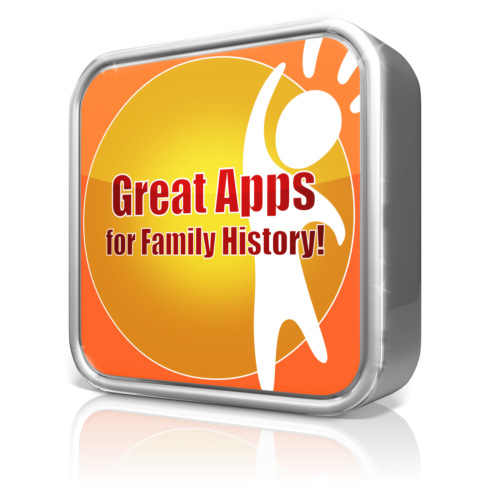 Looking for family history apps? Check out these recent recommendations.
Looking for family history apps? Check out these recent recommendations.
Recently Diane Haddad over at Family Tree Magazine featured 5 fun family history apps on the Genealogy Insider blog. She kindly shared them with us. (Thanks, Diane!)
1. Today In History provides headlines, quotes and images of important historical events from today’s date in history. It’s available for iPad and Android (Diane had to keyword-search its creator, Downshift LLC, to find it in the Android App Store).
2. Streetmuseum from the Museum of London lets you see the streets of your London ancestors. Select a destination from a London map or use your GPS to locate an image near you. Hold your camera up to the present day street scene and see the same London location from years ago on your screen. Information buttons give you historical facts. It’s available for iPad and Android.
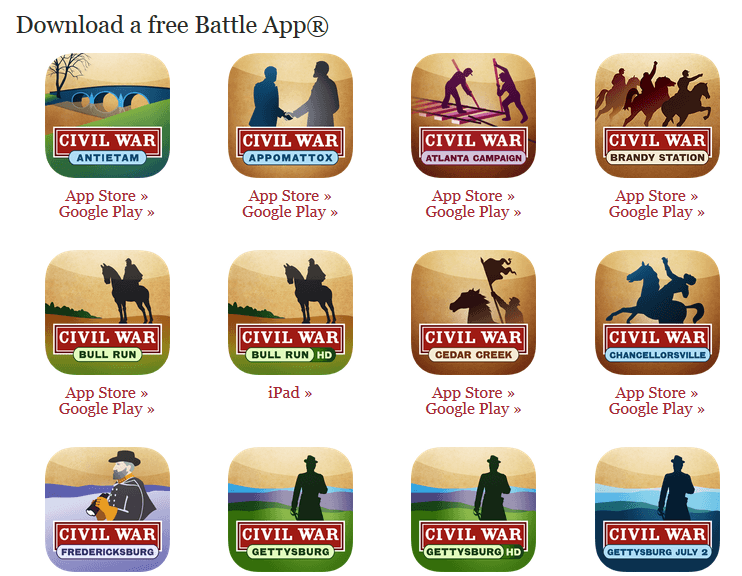 3. Civil War Battle Apps from the Civil War Trust are GPS-enabled guides to 17 well-known Civil War battles. Use them at the battlefield for a self-guided tour or remotely for a virtual tour. The battle maps show your location on the battlefield, and many have time-phased maps that show where Union and Confederate units were located at key moments. You also can see videos with experts and hear accounts from those who fought. These are available for iPad and Android.
3. Civil War Battle Apps from the Civil War Trust are GPS-enabled guides to 17 well-known Civil War battles. Use them at the battlefield for a self-guided tour or remotely for a virtual tour. The battle maps show your location on the battlefield, and many have time-phased maps that show where Union and Confederate units were located at key moments. You also can see videos with experts and hear accounts from those who fought. These are available for iPad and Android.
4. Biblion: The Boundless Library from the New York Public Library draws on the library’s records, photos, ephemera and other archival collections to take you on a tour of the 1939-40 New York World’s Fair. (A second edition of Biblion covers the writing of Mary Shelley’s Frankenstein.) Available for iPad.
5. History Here, a location-based app from the History Channel, lets you learn about thousands of historical places all over the United States. You can let your GPS set your location to learn about nearby historic sites, or choose any location in the app. Available for iPad and Android.
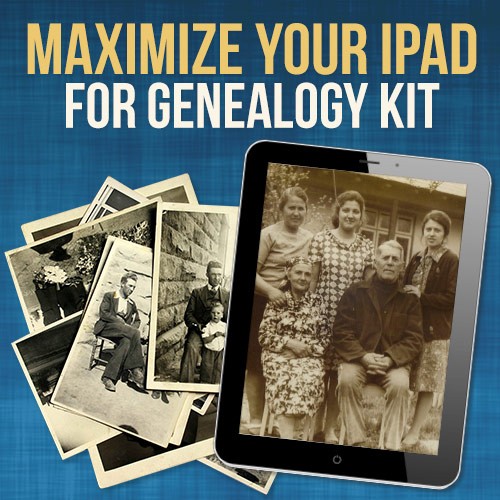 We love these family history app recommendations! Family Tree Magazine sells a great Maximize your iPad for Genealogy Kit on their website, which includes a webinar I did for them called “iPad: Your Ultimate Genealogy Tool” and an e-book version of my book Turn Your iPad into a Genealogy Powerhouse.
We love these family history app recommendations! Family Tree Magazine sells a great Maximize your iPad for Genealogy Kit on their website, which includes a webinar I did for them called “iPad: Your Ultimate Genealogy Tool” and an e-book version of my book Turn Your iPad into a Genealogy Powerhouse.
More Resources from Genealogy Gems on Mobile Genealogy:
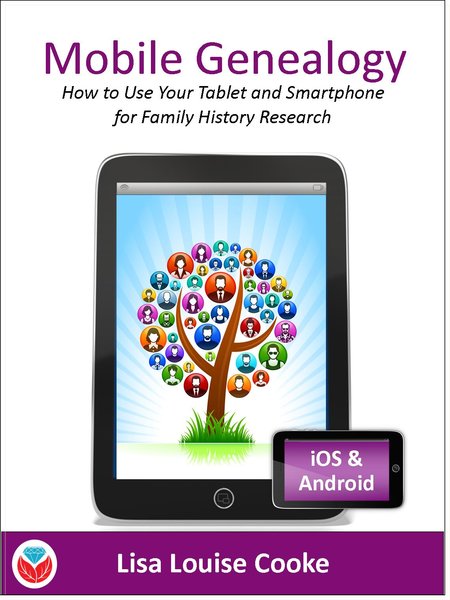 Mobile Genealogy: How to Use Your Tablet and Smartphone for Family History Research (2016 print book)
Mobile Genealogy: How to Use Your Tablet and Smartphone for Family History Research (2016 print book)
7 Great Ways to Use Your iPad for Genealogy and Family History
Video: Genealogy on the Go with the iPad (Premium website subscription required)
by Lisa Cooke | Sep 4, 2015 | 01 What's New, Ancestry, Australian, British, Census, Church, FamilySearch, Findmypast, History, images, Military, Records & databases, United States
 Here’s our weekly list of new genealogy records online. Do any collections below relate to your family history? Please share with your genealogy buddies or with societies that might be interested!
Here’s our weekly list of new genealogy records online. Do any collections below relate to your family history? Please share with your genealogy buddies or with societies that might be interested!
AUSTRALIA WWI WOMEN. New media resources, including a television series, Facebook page and Twitter feed have been created to share more information about Australians and New Zealanders who participated in World War I, particularly women. Click here for a related blog post from The National Archives (Australia).
COLOMBIA CHURCH RECORDS. More than a million browsable records have been added to an existing database at FamilySearch, Colombia Catholic Church Records 1600-2012. “These records include: baptisms, confirmations, marriages, pre-marriage investigations, marriage dispensations, deaths, and indexes.” Some of the collection is already indexed.
ENGLAND ELECTORAL REGISTERS. Electoral registers for Manchester, England (1832-1900) are now browsable on Findmypast. Details about an ancestor’s residence and property ownership may appear.
NEW JERSEY STATE CENSUS. FamilySearch just added more than 2.7 million records from the 1915 New Jersey Census to its free online collections. These records include “the names of each member of the household, location, gender, birth date (month and year) and birthplace.” Click here learn more about this and other state censuses.
TEXAS MARRIAGE RECORDS. More than half a million indexed records have been added to an existing free database, Texas County Marriage Records 1837-1977, at FamilySearch. Covering 140 years, the records include “various types of marriage records (registers, licenses, intentions to marry, etc.) from 183 of the 254 counties in Texas.”
 Thank you for sharing these new genealogy records online with your genealogy friends and fellow society members via email and your favorite social media channels. Just use the Share buttons on this page!
Thank you for sharing these new genealogy records online with your genealogy friends and fellow society members via email and your favorite social media channels. Just use the Share buttons on this page!
by Lisa Cooke | Jan 22, 2015 | images, Military, Technology
If you’ve ever watched the television show Forensic Files now on HLN, you’ve probably seen forensic anthropologists create a bust of clay from skeletal remains. The time-consuming process provides a way to visualize what the person may have looked like. It’s a tedious task, with a keen understanding of anatomy intertwining with artistic skill.
One episode stands out in my memory. A woman’s remains were found months if not years after her demise. A bust was created and photographs were taken to be distributed as a sort of mug shot. “Do you know this woman” was posted in the newspaper along with the photo, and sure enough a good friend of the woman identified her immediately.
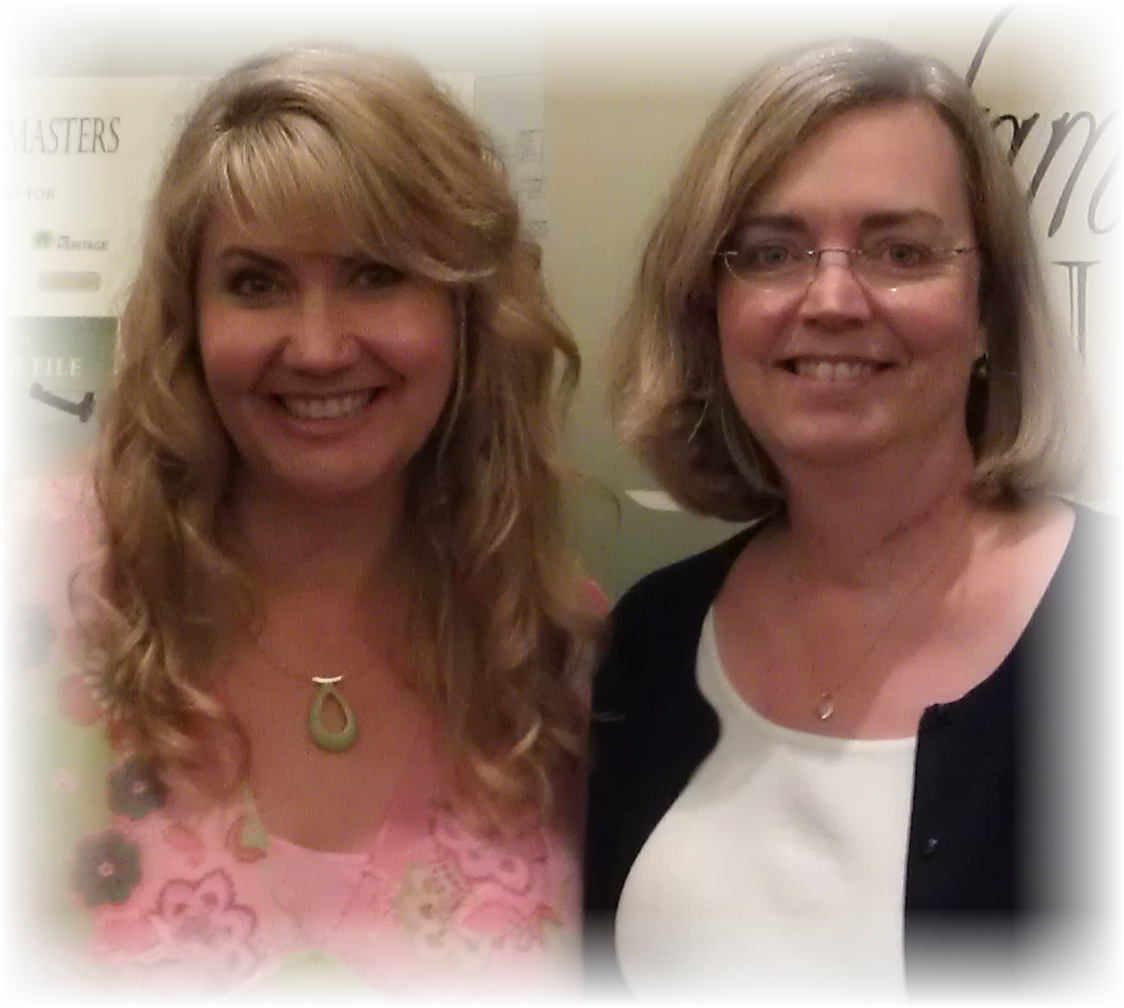
Lisa Louise Cooke with Maureen Taylor (right), the Photo Detective.
So why talk about this on a genealogy blog? Well, in the most recent episode of the Genealogy Gems Premium Podcast (#119) published this week, Maureen Taylor, The Photo Detective, and I discuss the future of technology and genealogy, which lead to a conversation on 3D printing. Maureen described how she had a bust of herself printed 3D (which I’m sure her long-into-the-future descendants will appreciate! You can see it on the episode show notes page.) and that got me to thinking about the work of the forensic anthropologists. Shortly after our conversation, Maureen sent me a link on Facebook called History’s Mysteries posted by the carrier company UPS.
The UPS Compass webpage features a video documenting the efforts of the Maritime Heritage National Marine Sanctuaries, with the help of UPS, to identify the remains of two sailors from the USS Monitor that sank in 1862 during a storm off the coast of Cape Hatteras. Sure enough, they had clay busts created from the skeletal remains in an effort to make the identification.

(Click the link above to watch the video. Then put your genealogy skills to work and see if you can help them identify the two sailors.)
What role did UPS play? They had the task of transporting the busts from the lab to the unveiling at the military ceremony. Any disruption of the soft clay would dent and alter the bust. I couldn’t help but wonder if 3D printing could have made the task of moving and distributing copies of the busts easier. It’s a fascinating technology. And who knows, perhaps 3D busts of ancestors will be as common place as our old photos are today. Do you think your descendants will want, perhaps even expect, to have 3D printings of you? Share your thoughts on the Genealogy Gems Facebook page.
 You can learn more about 3D printing here in the article called A New Industrial Revolution: The Brave New World of 3D Printing.
You can learn more about 3D printing here in the article called A New Industrial Revolution: The Brave New World of 3D Printing.
by Sunny | Jun 4, 2018 | 01 What's New, DNA, Forensic Genealogy
The Golden State killer DNA-credited arrest was just the beginning. Another cold case—a double murder—has new answers thanks to forensic genealogy research techniques and a company that helps criminal investigators use them. Though legal and privacy questions still...
by Lacey Cooke | Jun 7, 2019 | 01 What's New, Records & databases, Swedish |
This week’s Friday records post is all about Swedish genealogy! Findmypast has added 12 million Swedish records to their international collection, and we’ll show you other resources for accessing similar records. We’ll also highlight some past unique collections for Sweden, and you can explore expert research tips from a professional genealogist.
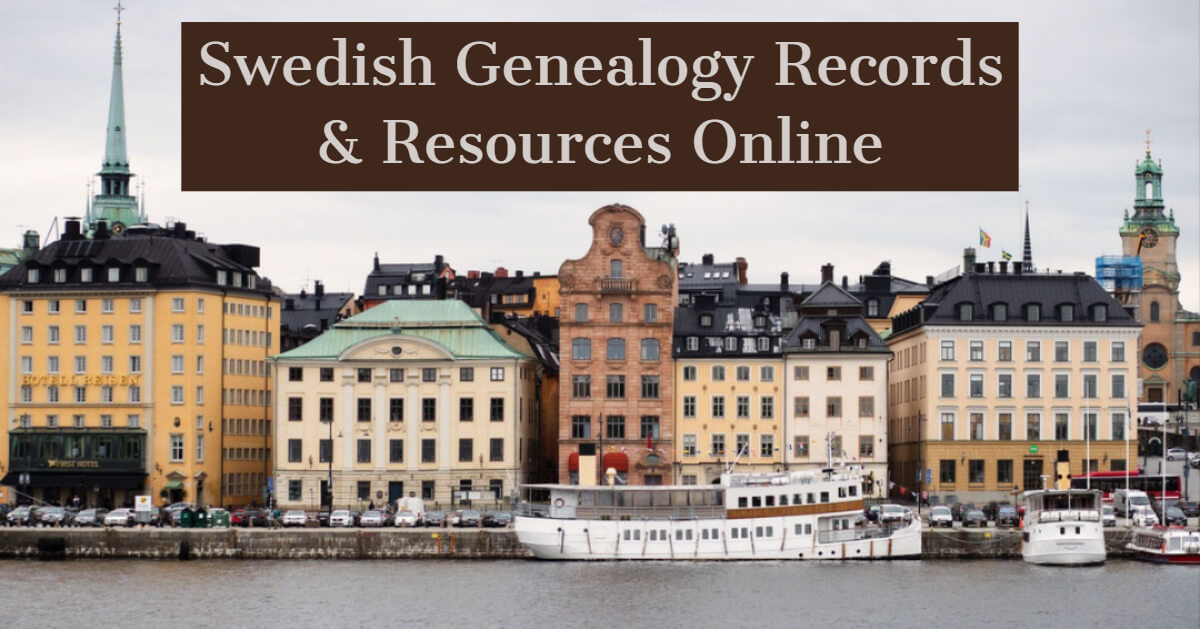
Featured: Swedish Genealogy Records Online
June 6 is the National Day of Sweden, which honors two historical events: Gustav Vasa being elected king on June 6, 1523, and the adoption of a new constitution on June 6, 1809. After decades of discussion, the Swedish parliament finally voted to make June 6 a public holiday. And we can’t think of a better way to observe than to spend time researching your Swedish ancestors!
As Findmypast continues to grow their international records database, they’ve highlighted the recent addition of Swedish records to their collection. Over 12 million Swedish baptisms, marriages, and burials are now dating back to 1611 are now available to search on Findmypast. These records will also generate hints against your Findmypast family tree.
Their Swedish collection consist of the following indexes:
If you’re a Findmypast subscriber, head over there now to explore these indexed records. If you’re not a Findmypast subscriber, you can explore select Swedish baptisms, burials, and marriages at Ancestry.com. You can also find select Swedish baptisms, burials, and marriages at FamilySearch.org for free.
Unique Swedish Genealogy Resources
Swedish Newspapers. A couple of years back we highlighted the Minnesota Historical Society’s collection of Swedish-American newspapers. They are available through an online portal. Users can explore more than 300,000 pages from 28 different Swedish-American newspaper titles published across the U.S. between 1859 and 2007. The portal is available in Swedish and English and includes a keyword search.
Biographies of notable Swedish women. The Chicago Evening Post reported on a new online biographical dictionary of women in Swedish history. The site itself is Svenskt kvinnobiografiskt lexicon (it does have an English-language home page). The home page encourages visitors to “Read up on 1,000 Swedish women from the Middle Ages to the present day. Use the search function to reveal what these women got up to, how they were educated, which organisations they belonged to, where they travelled, what they achieved, and much more. All of them contributed in a significant way to the development of Swedish society.” According to the Chicago Evening Post, the current collection of 1,000 biographical sketches will soon double (at least)
Expert Swedish Genealogy Research Tips
Swedish genealogy can be daunting. Many people avoid Swedish research because they don’t speak the language and because the names change every generation–like from Ole Olsson to Ole Nilsson to Nils Pehrrson. Despite these barriers, Swedish research can be relatively simple, fun, and successful! In a special guest article, Paul Woodbury, a Senior Genealogist with Legacy Tree Genealogists, shares the following 5 things to keep in mind when researching your Swedish ancestors:
- You can “read” many records without reading Swedish.
- Family events are summarized in Swedish clerical examinations.
- Many Swedish records cross-reference each other.
- You can trouble-shoot record gaps.
- There are some excellent Swedish indexes and databases online.
Paul covers these 5 points in-depth in this special article. Click here to read it now!
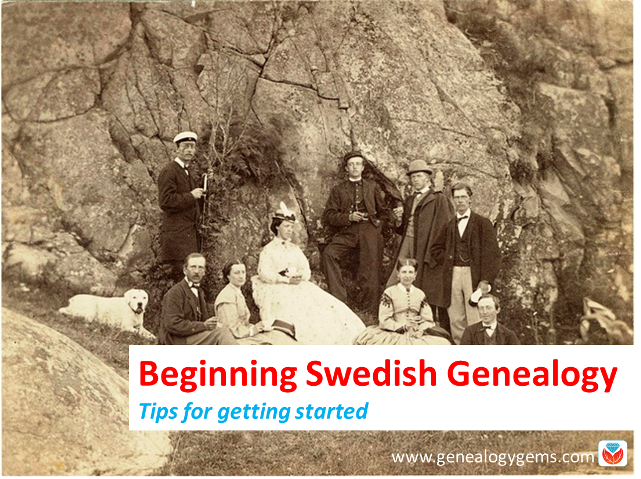

About the Author: Lisa Louise Cooke is the producer and host of the Genealogy Gems Podcast, an online genealogy audio show and app. She is the author of the books The Genealogist’s Google Toolbox, Mobile Genealogy, How to Find Your Family History in Newspapers, and the Google Earth for Genealogy video series. She is an international keynote speaker and the Vice President of the Genealogical Speakers Guild.
Disclosure: This article contains affiliate links and Genealogy Gems will be compensated if you make a purchase after clicking on these links (at no additional cost to you). Thank you for supporting Genealogy Gems!
![]() Looking for family history apps? Check out these recent recommendations.
Looking for family history apps? Check out these recent recommendations. 3. Civil War Battle Apps from the Civil War Trust are GPS-enabled guides to 17 well-known Civil War battles. Use them at the battlefield for a self-guided tour or remotely for a virtual tour. The battle maps show your location on the battlefield, and many have time-phased maps that show where Union and Confederate units were located at key moments. You also can see videos with experts and hear accounts from those who fought. These are available for iPad and Android.
3. Civil War Battle Apps from the Civil War Trust are GPS-enabled guides to 17 well-known Civil War battles. Use them at the battlefield for a self-guided tour or remotely for a virtual tour. The battle maps show your location on the battlefield, and many have time-phased maps that show where Union and Confederate units were located at key moments. You also can see videos with experts and hear accounts from those who fought. These are available for iPad and Android. We love these family history app recommendations! Family Tree Magazine sells a great Maximize your iPad for Genealogy Kit on their website, which includes a webinar I did for them called “iPad: Your Ultimate Genealogy Tool” and an e-book version of my book Turn Your iPad into a Genealogy Powerhouse.
We love these family history app recommendations! Family Tree Magazine sells a great Maximize your iPad for Genealogy Kit on their website, which includes a webinar I did for them called “iPad: Your Ultimate Genealogy Tool” and an e-book version of my book Turn Your iPad into a Genealogy Powerhouse. Mobile Genealogy: How to Use Your Tablet and Smartphone for Family History Research (2016 print book)
Mobile Genealogy: How to Use Your Tablet and Smartphone for Family History Research (2016 print book)







